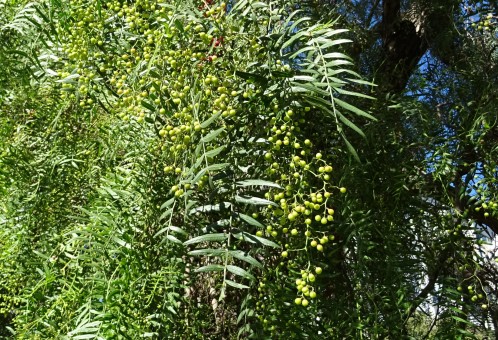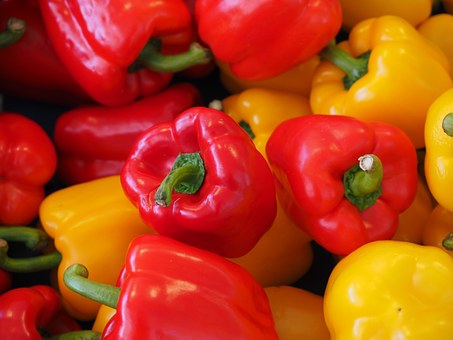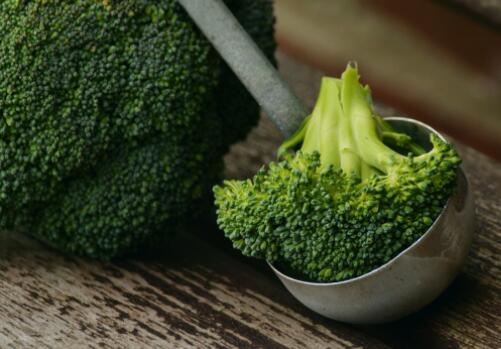What kind of crop is suitable to grow under the pepper tree? What kind of crops can be interplanted under the tree?
Zanthoxylum bungeanum, also known as big pepper, Qin pepper and Shu pepper, is a common plant in China. It is widely planted because it can be used as both seasoning and traditional Chinese medicine. However, because young pepper is not suitable for successful planting, farmers will adopt interplanting mode to enhance soil strength. What crops are suitable for planting under the pepper tree? What kind of crops can be interplanted under the tree?

In young pepper orchards or pepper gardens with low coverage of pepper trees, intercropping crops can be planted between the rows of prickly ash trees. The crops planted in Zanthoxylum bungeanum orchard can cover the soil, prevent erosion, reduce the damage of weeds, increase soil humus and improve soil fertility; at the same time, it can make rational use of land and intercropping grain and other cash crops, which can not only increase grain production, but also increase people's income, so as to achieve the goal of "raising the field with the garden" and "growing with the short term". Interplanting crops also have some disadvantages, which are prone to adverse effects such as competing with pepper for water, nutrients and sunlight. However, if the crop species are selected and planted properly, the adverse effects can be reduced to a minimum.
The trunk of Zanthoxylum bungeanum is lower, and it is suitable for intercropping only in the young or early fruit stage, but not in the full fruit stage. Even in the early stage, we should also pay attention to the selection of inter-crop types, in order not to affect the growth and development of prickly ash. The conditions that fine intercrop should have are that the short growing period absorbs less nutrients and water, and the period of large amount of water and fertilizer is different from that of Zanthoxylum bungeanum; the plant is smaller and will not affect the light conditions of Zanthoxylum bungeanum; it can improve soil fertility and reduce diseases and insect pests; moreover, it will not aggravate the diseases and insect pests of fruit trees, and the economic value of intercrop itself is higher.
It is usually suitable for beans, potatoes, wheat, melons and vegetables. Beans suitable for intercropping are peanuts, mung beans, soybeans, red beans and so on. The plants of this kind of crops are generally shorter, nitrogen fixation can improve soil fertility, and there is less contradiction with pepper trees for fertilizer. Among them, peanut plants are short and need less fertilizer and water, so they are good intercrops in prickly ash orchard in sandy land.
Potatoes are mainly sweet potatoes and potatoes. Sweet potato needs less fertilizer and water in the initial stage and has little effect on prickly ash tree, but it needs more fertilizer and water in the later stage of potato block formation. For pepper trees that are too prosperous, planting sweet potato can make them stop growing earlier, but for a large number of fruiting trees, it is easy to affect the growth in the later stage. Because of its strong adaptability and high yield, sweet potato is a commonly used intercrop in prickly ash garden. However, when the sweet potato grows vigorously, the green leaves cover the ground completely, the ground reflects little light to the crown, the inner chamber and the lower part of the crown appear to be lack of light, and the fruit is poorly colored.
The root system of potato is shallow, the growing period is short, and the sowing date is early, and there is little contradiction with the glory of pepper trees. As long as we pay attention to fertilizer and irrigation, both of them can get a bumper harvest, so it is a common intercrop in pepper orchards with better flat fertilizer and water conditions.
It is also used as intercropping of wheat and barley in pepper garden. The plant of this kind of crop is not very tall, it grows mainly in spring, the whisker root is dense, it can increase the soil aggregate structure, and the economic value of wheat itself is high. However, wheat crops are easy to compete with Zanthoxylum bungeanum trees for fertilizer and water in early spring because of their deep root absorption, so when used as intercropping, it is necessary to increase fertilizer and water, which can reduce the adverse effects on prickly ash trees.
The intercropping of pepper trees and vegetables is more beneficial to fruit trees because of its fine farming and sufficient fertilizer and water. But it is planted in autumn. Vegetables that need more fertilizer and water or mature late are easy to prolong the growth of Zanthoxylum bungeanum trees, which is disadvantageous to the overwintering of prickly ash trees, often causing new shoots to "smoke thousands" or dead trees; at the same time, it is easy to aggravate the harm of floating dust to pepper branches.
There should be a certain distance between the crop planting and the prickly ash tree, usually limited to the periphery of the crown, otherwise it will have adverse effects on the prickly ash tree and intercrop. The root system of young pepper tree is underdeveloped, and its ability to compete for fertilizer and water with crops is poor, so it should be closer to the crown. Big trees have well-developed roots and can be planted far away from the crown. In addition, where the fertilizer and water conditions are better, the prickly ash tree is taller, the root system is deeper, and the crown branch is sparse, the intercropping species can be closer to the tree.
Time: 2019-04-08 Click:
- Prev

What kind of hybrid plant color pepper is good? When will you plant it? When will you collect it? How do you plant it? (with greenhouse planting technology)
Colored pepper is one of the sweet peppers, which gets its name because of its various colors. It is rich in vitamins and trace elements. Often eaten, it can replenish blood and promote blood circulation, so many people like to eat it.
- Next

Which varieties can be chosen for broccoli cultivation in summer? How to raise seedlings and plant? What are the pest control techniques?
Broccoli is also known as broccoli, Italian cauliflower, Italian kale, cauliflower, green cauliflower, cauliflower, broccoli. And the cultivation is easy, the supply period is long, and has a bright future. Which varieties can you choose to grow broccoli in summer? How to raise seedlings and plant? What are the pest control techniques? Variety selection
Related
- Fuxing push coffee new agricultural production and marketing class: lack of small-scale processing plants
- Jujube rice field leisure farm deep ploughing Yilan for five years to create a space for organic food and play
- Nongyu Farm-A trial of organic papaya for brave women with advanced technology
- Four points for attention in the prevention and control of diseases and insect pests of edible fungi
- How to add nutrient solution to Edible Fungi
- Is there any good way to control edible fungus mites?
- Open Inoculation Technology of Edible Fungi
- Is there any clever way to use fertilizer for edible fungus in winter?
- What agents are used to kill the pathogens of edible fungi in the mushroom shed?
- Rapid drying of Edible Fungi

